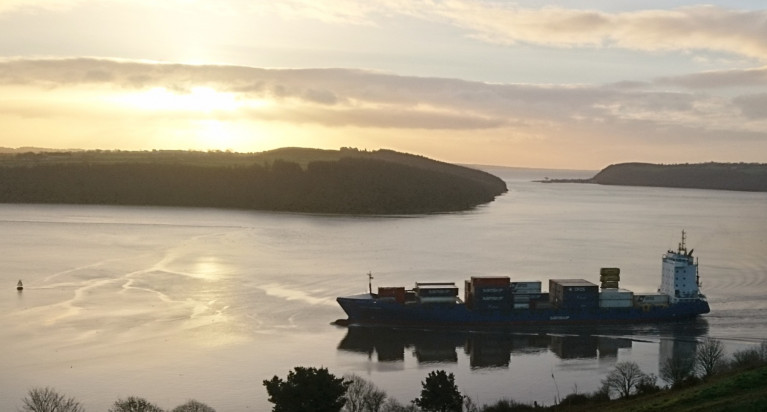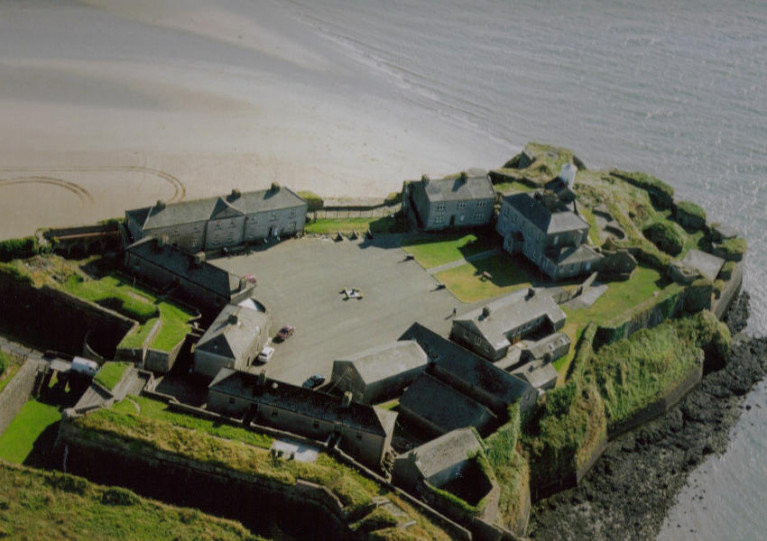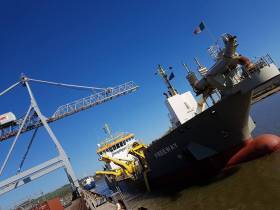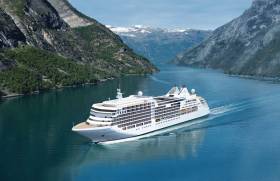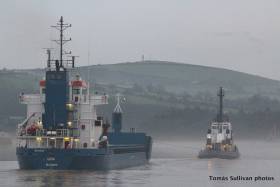Displaying items by tag: Waterford Estuary
The Irish Port of Waterford has launched a brand new report titled ‘The Maritime Heritage of Waterford Estuary’.
Marine resource economist, Dr Naomi S. Foley, the author of the report, was commissioned by the south-east port to highlight the variety of opportunities to develop and promote the estuary.
To consult the report which is available to view online here, offers an overview of the natural and cultural heritage of Waterford Estuary.
As highlighted in the report are the outlining opportunities for the future sustainable development, promotion and preservation of this heritage that could benefit the coastal communities of the estuary.
The Port of Waterford’s Heritage Committee Chairman, Joe Dreelan said, “This report is an important publication as it helps to place a framework around potential collaborations in order to achieve a number of objectives; including increasing the awareness of the maritime heritage of Waterford Estuary; contributing to a sense of community, pride and place through sustainable social and economic development and work towards strengthening and building on current community development projects.
The chairman added, for example "to those projects funded by the FLAG and LEADER programme in order to promote, preserve and enjoy our unique maritime heritage.”
Welcoming the report, CEO of Waterford Council Michael Walsh said, “Waterford Estuary has a rich maritime heritage and we are delighted to see the breadth of potential opportunities for potential future engagement and development across the areas of natural and cultural heritage".
The CEO also commented "We look forward to collaborating further with Port of Waterford to investigate the possibility of these project proposals. We have seen the success of the Waterford Greenway and note the proposition of a Waterford Estuary Blueway which is certainly something that is on our radar.”
The report gives us a full account of how the villages on both sides of the Wexford and Waterford estuary became such vital cogs in the trading success of Waterford City and the wider Southeast, and laterally how fishing became central to the villages’ economic wellbeing.
In commissioning and championing this report, Port of Waterford wishes to acknowledge the role Cheekpoint, Passage East, Duncannon, Dunmore East, Ballyhack and Arthurstown played in the Port’s development over the generations.
South-East Inshore Fishermen Call for Investigation into Pollution on the Waterford Estuary
Inshore fishermen are calling on the Environmental Protection Agency (EPA) to investigate why stocks of shellfish have declined and seaweed has stopped growing in parts of the Waterford estuary.
As The Times Ireland edition reports today, the National Inshore Fishermen’s Association (NIFA) is also appealing to the EPA to refuse a revised discharge license application sought by a gas-powered plant at Great Island, near Campile, Co Wexford, on the confluence of the Suir and Barrow river estuaries.
NIFA, which was established in 2017 to represent some 200 commercial inshore boats of less than 12 metres in length, works closely with the National Inshore Fishermen’s Organisation (NIFO), which also opposes the license application.
NIFA general secretary Alex Crowley says that the Waterford estuary supports important inshore fisheries for shrimp, whelk, lobster, velvet and green crab, and there is also pelagic trawling for sprat and herring and dredging for various bivalve species.
The estuary is close to an “important spawning ground for a number of commercially important species including Celtic Sea herring”, the organisations state.
Crowley says that local fishermen have noticed how shrimp, whelk and velvet crab stocks have recorded a “noticeable decline”.
The fishermen claim that there has been “significant die off” of bivalve shellfish species, and seaweed no longer grows in the intertidal zone for “some miles” downstream of the plant’s current outfall pipe.
SSE Generation’s 464MW natural gas-fired combined cycle gas turbine (CCGT) power plant dates from 2015, replacing the former oil-fired station run by the ESB.
All large combustion plants are now required to renew their emissions licence under the EU’s Industrial Emissions Directive, and SSE’s application for a licence review is part of this process, the company says.
The company describes the plant as “one of the cleanest and most-efficient power stations on the island of Ireland, generating enough electricity to power half a million Irish homes”.
It says it works with the EPA on an ongoing basis to ensure it is compliant with its licence conditions at all times.
However, NIFA is concerned that the EPA learned last September that some 1300 tonnes of chemicals were being discharged into the estuary under a license covering just five tonnes.
NIFA is specifically concerned with the use of chlorine, in the form of sodium hypochlorite, which is added to cooling water at intake to prevent fouling of pipes within the power station.
The EPA said it had investigated the allegations and found SSE to be “compliant with the license limits on the concentration of chlorine in discharged water”.
The EPA said it found no evidence that SEE’s discharge was having “such an effect on shellfish and fish mortality”, and said there was “insufficient evidence to conclude which individual pressures, if any, are contributing to impacts on marine life in the estuary”.
The EPA said the submission by NIFA would be considered as part of the revised license application under the relevant legislation
Read The Times here
Ireland’s Heritage Minister recently got a first-hand look at the dedication of volunteers in Co Wexford involved in this year’s Coastwatch Ireland coastal survey, which concluded earlier this month.
Today, Sunday 25 October, is the last day to submit data for this year’s autumn survey.
As the Gorey Guardian reports, Malcolm Noonan TD was at Duncannon Fort to learn about the importance of the Waterford Estuary — as well as management and fisheries plans for the area.
These would involve local fishermen returning to “heritage fishing gear and methods” in efforts to sustainably manage a key resource in Ireland’s South East.
The estuary has been a key issue for Coastwatch Ireland, which earlier this year welcomed a High Court decision to ban dredging for razor shells without a proper environmental assessment.
The Gorey Guardian has much more on the story HERE.
Coastwatch Welcomes Judgment on Waterford Estuary Protection
Coastwatch has welcomed a High Court decision closing the Waterford estuary to razor shell dredging without proper environmental assessment.
The ruling has implications for fishing activity on marine sites which are designated as Natura 2000 locations, Coastwatch director Karin Dubksy has said.
The High Court ruling issued last week quashes permission to dredge for razor shells in the Waterford estuary.
The ruling says that the decision to permit the activity was made without screening or appropriate assessment under Article 6(3) of the EU Habitats Directive to check if there is no adverse impact on the integrity of the site.
Last September, Coastwatch secured a temporary injunction preventing fishing for razor clams in the Waterford estuary, pending the outcome of a legal challenge.
It took proceedings against the Sea Fisheries Protection Agency (SFPA), the Minister for Agriculture, Food and the Marine, Ireland and the Attorney General.
Ms Dubsky said that the final ruling delivered on July 13th involves an undertaking that the Minister will agree to review the Sea Fisheries Regulations statutory instrument 290/2013 by November 30th this year.
This would ensure that Irish law “fully transposes the requirements of EU environmental law and, in particular, the EU Habitats Directive”, she said.
“Coastwatch will be entitled to make submissions to this review,” she said, and the State is responsible for the non-governmental organisation’s costs in the legal case.
“There has been too much optimism that the sea will cope with almost every private or corporate use anyone comes up with. The sea can’t and we need to protect it,” Ms Dubsky said.
“On top of that, climate change is already impacting on estuarine and coastal ecosystems. A hot spell can cause local mass death of organisms. There aren’t enough marine protected areas (MPAs) as connected safe havens to support species survival and those we have aren’t managed properly,” she said.
“The new Programme for Government sets out some positive plans, and with COVID payments and changes in markets, there is a real opportunity now to restructure and focus on ocean health,” she said.
“ We should support creation of marine protected areas, restoration and management plans and traditional low impact fisheries with locally designed closed areas,” she said.
The Department of Agriculture, Food and Marine said it was pleased that the case had been brought to a “satisfactory conclusion by means of an agreed settlement”.
It said that “while a commitment to review the Sea Fisheries Regulations SI 290 of 2013 does not form part of the settlement submitted to the High Court, the department has committed to undertake a review of SI 290 of 2013 by November 30th this year”.
Dredging Operations Underway at the Port of Waterford
A maintenance dredging campaign has begun in recent days at the Port of Waterford where activities will involve the waters of Duncannon Bar, Cheekpoint, and at the port's main terminal at Belview, writes Jehan Ashmore
Prior to the operations at the south-east port, the Cypriot flagged Shoalway, a trailing suction hopper dredger had been carrying out operations for the Dublin Port Company. Shoalway sailed from the capital to arrive on the Waterford Estuary on Sunday.
According to the Port of Waterford (click to consult campaign notice here), the dredger will dispose spoil at an approved site south west of Hook Head, Co. Wexford. Dredging will be followed by a bed levelling campaign by the vessels, Fastnet Sound and or the Glenesk.
Afloat adds that Irish Dredging which is a subsidiary of Royal Boskalis Westminster nv, the world’s largest dredging group, was given the contract from the Port of Waterford. The extensive fleet of the Dutch group provides Irish Dredging access to the use a of wide range of vessels for projects around the Irish coast.
Further tracking of the Shoalway since introduction on the Waterford Estaury has seen the 90m long dredger kept busy between Cheekpoint to the spoiling grounds out to sea.
The campaign according to the Port of Waterford is expected to last approximately 24 days.
Dredging Campaign Continues Operations at Port of Waterford
#Irishports - The Port of Waterford have issued a Marine Notice in recent days to advise all ship owners, shipmasters, agents, fishing vessels, pleasure craft users, seafarers and fishery organisations of a dredging campaign, writes Jehan Ashmore.
The dredging operation along Waterford Estuary began in mid-March and according to the south-east multi-modal Port the campaign will continue until around 6 April.
Carrying out these works is the task of trailing suction hopper dredger Freeway which will conduct dredging activities in the vicinity of Belview Port. The lo-lo facility located downriver of Waterford City is the main port along the estuary.
Freeway is operated by UK firm, Royal Boskalis Westminster based in Hampshire. They are no strangers to these waters having been contracted previously by the port and more recently from the Dublin Port Company. Due to berth capacity constraints the 92m dredger during December had to dock in Dun Laoghaire Harbour.
On this occasion, Freeway's role on Waterford Estuary will include duties carried off Cheekpoint and at the Duncannon Bar located further downriver and beyond where the Passage East ferry links to Ballyhack.
Disposal material from Freeway will take place at an approved site south west of Hook Head. Following such work a bed-levelling campaign will be assigned to the Waterford City based catamaran craft Fastnet Sound.
#Cruiseliners - Anchored off Dunmore East, Waterford Estuary this morning is the 'Solstice' class Celebrity Silhouette, which had sailed overnight from Cork (Cobh) Harbour, writes Jehan Ashmore.
Dunmore East, a fishing harbour village set in beautiful surroundings is a gateway for cruise visitors. Tenders from the Celebrity Cruises ship are is use to disembark those ashore and begin exploring the local attractions and activities. In addition the south-east region offers destinations beyond Waterford in the neighbouring counties.
Asides today's call by Celebrity Silhouette, Port of Waterford is set to welcome a further four cruisecallers with Azamara Pursuit due next on August 26th. The remaining trio call next month, marking the season's end. Brillance of the Seas is scheduled on September 3rd, Ocean Majesty on the 4th and the concluding caller will be Nautica on the 24th.
Afloat has calculated the total passenger capacity of the quartet of cruiseships to be 4,475 passengers. Based from this, the call of Celebrity Silhouette, given its capacity of 2,850 alone clearly demonstrates the importance of these considerably larger cruiseships to Waterford estuary. Smaller cruisecallers though with potentially high-spending clientele, head to Belview Port and upriver on the Suir along Waterford City quays.
According to the recently published Dept. of Transport's: Transport Trends report, the cruiseship sector is an increasingly important element of maritime activity in Irish waters. The number of cruiseship visits grew by 12% from 209 in 2016 to 234 in 2017, while the number of cruise ship passengers rose by 19% to 264,763 in 2017.
The call of the 122,000 tonnes Celebrity Silhouette is a boost to the local ecomony as the Port of Waterford has faired less compared to other ports. This was a conclusion drawn from the report, as Waterford had 37% fewer cruise passengers last year than in 2016 at 4,710.
Not suprisingly, the larger main ports of Dublin and Cork dominated the cruiseship market in 2017. According to CSO figures compiled in the report, these ports combined hosted 83% of ship visits and 93% of the passengers.
Among the callers to Dublin Port this season, is Celebrity Silhouette which notably for the first time was homeported in the capital port. As reported earlier this year, the US based Celebrity Cruises was estimated to handle over 14,000 people start their holiday from Dublin Port. The Maltese flagged ship easily became the largest such cruiseship to do.
The concept of homeporting in Dublin Port is not unique as last year, the capital port welcomed Cruise & Maritime Voyages 46,000 tonnes Magellan. The 1,250 passenger cruiseship continues this season to offer direct no-fly cruises.
In addition the Bahamas flagged Magellen makes a new departure this year as CMV will from next month also offer direct cruises from Cork.
In May and June 2019, Celebrity are to deploy Celebrity Reflection which is scheduled to sail from Dublin as part of a mini-season offering five cruises from Ireland.
#NewFlagship - Half of all cruiseship calls to visit Waterford Estuary are due in the first of a three-month season in which Afloat has identified to include a brand new cruiseship, writes Jehan Ashmore.
According to the cruiseship line-up for 2017, Afloat has noted that eight out of a total of 16 cruiseships are to visit the south-east region in the opening month of June. The leaves the balance of four cruiseships to call in August and equally the same number for the concluding month of September.
The Port of Waterford has terminals dotted on the estuary where 1,000 years ago Viking longboats headed upriver to firmly establish a trading port. This established Ireland's oldest city. In more recent centuries the city became world famous for its crystal making traditions. A popular tourist attraction as well as to the manor estate gardens on the environs of the city.
Brand New Cruiseship Call
As referred above Afloat has identified the call of a brand new cruiseship which is to be the Silver Muse, the flagship of Monaco based Silverseas Cruises. The 40,700 gross tonnage newbuild accommodates 596 guests in ultra-luxurious facilities. The newcomer is an exciting evolution of their Silver Spirit.
Afloat will have more to report on Silver Muse which will make a pre-inaugural voyage in home seas next month on a round trip voyage from Monte-Carlo of Mediterranean gems. Among them calls to quintessential destinations such as Barcelona, Palma and Portofino.
As for the first to caller to Waterford in early June is Artania. Pheonix Reissen, the German operators of the ship which would be more familiar to most as the original Royal Princess completed in 1984 for US based Princess Cruises. The 44,500 tonnes Artania with a 1,100 passenger capacity has been allocated an anchorage call off Dunmore East.
The predominant fishing harbour at the entrance to the estuary is where a further seven cruise callers will too be making an anchorage call.
Ultra luxury small-cruiseship Hebridean Sky of Noble Caledonia, is to call twice. Firstly calling in June at Belview, the main cargo (mostly lo-lo containers) terminal for the Port of Waterford.
On the second call in August, the diminutive sized ship is expected to head upriver to the city quays. The 4,200 tonnes ship is to berth along Frank Cassin Wharf, the former Bell Lines lo-lo terminal.
Brand New Cargoship Calls In Wake of Older Cargoship Grounding
#Cargoships - One of Arklow Shipping’s newest cargoships, the single-hold Arklow Cape is today docked on the River Suir at Belview the Port of Waterford, writes Jehan Ashmore.
The Irish flagged 5,053dwt newbuild with Arklow as a port of registry, was launched in October last year and delivered into service the following month. The ‘C’’ class vessel is the second of a 10-ship order from Ferus Smit’s Dutch yard in Westerbroek.
Arklow Cape departed from Bayonne on the French Atlantic coast and the voyage took two days to reach Waterford Estuary. The newbuild arrived yesterday evening to Belview Terminal, downriver of Waterford City.
In the career of Arklow Cape typical cargoes will include grain to be carried in a ship that measures 87m in length overall and is a similar size to cargoship Lisa. The 89m vessel dating to 2001, however while on the neighbouring River Barrow more than a week ago got into difficulties having grounded.
Fortunately all crew were safe following the incident which saw the cargoship become stuck on a mud-bank south of the Pink Rock. The location is between the disused Barrow Railway Bridge and New Ross Port, the ship's destination.
Tugs were dispatched to the scene from Waterford based operator, Fastnet Shipping. Among the tugs involved was the 25 ton bollard pull tug Bargarth which came to the aid of the St. John's registered cargoship.
The undamaged Lisa was refloated and was able to continue the short leg upriver to the inland port to discharge a 4,500 tonne dry cargo.
After an inspection by maritime authorities, the cargoship was permitted to set sail.
Waterford Estuary's Passage East Ferry Off Service
#FerryOffService - The Passage East Ferry service on Waterford Estuary has been suspended until next Monday (14th March) due to maintenance, according to AA Roadwatch.
FBD Tintern is currently off service as otherwise Afloat adds the 130 passenger/30 vehicle capacity ferry serves the River Suir crossing linking the villages of Ballyhack in Co. Wexford and Passage East in Co. Waterford.
The short passage only takes around 15 minutes and with an average of 120 crossings every day keeps the 236 tonnes FBD Tintern busy, notably during peak commuter times and in the summer.
The present car ferry service began in 1982 when the Dunbrody replaced a small boat ferry service that had been in place for hundreds of years. In January, the ferry business was reported as up for sale.


























